The New York Giants, a cornerstone franchise of the NFL, boast a rich history and a devoted fanbase. Central to the Giants’ identity are their iconic football uniforms, which have undergone numerous evolutions since the team’s inception. Recently, the release of the Giants’ 2024 uniform schedule sparked considerable discussion, particularly concerning their road uniforms. This article delves into the fascinating history of the New York Giants Football Uniforms, analyzing their transformations and exploring the ongoing debate surrounding the team’s away game attire. We will examine the evolution of these uniforms, from their early red-dominant days to the current, often debated, white and red combination, and discuss potential paths forward to create a truly iconic road look for the Giants.
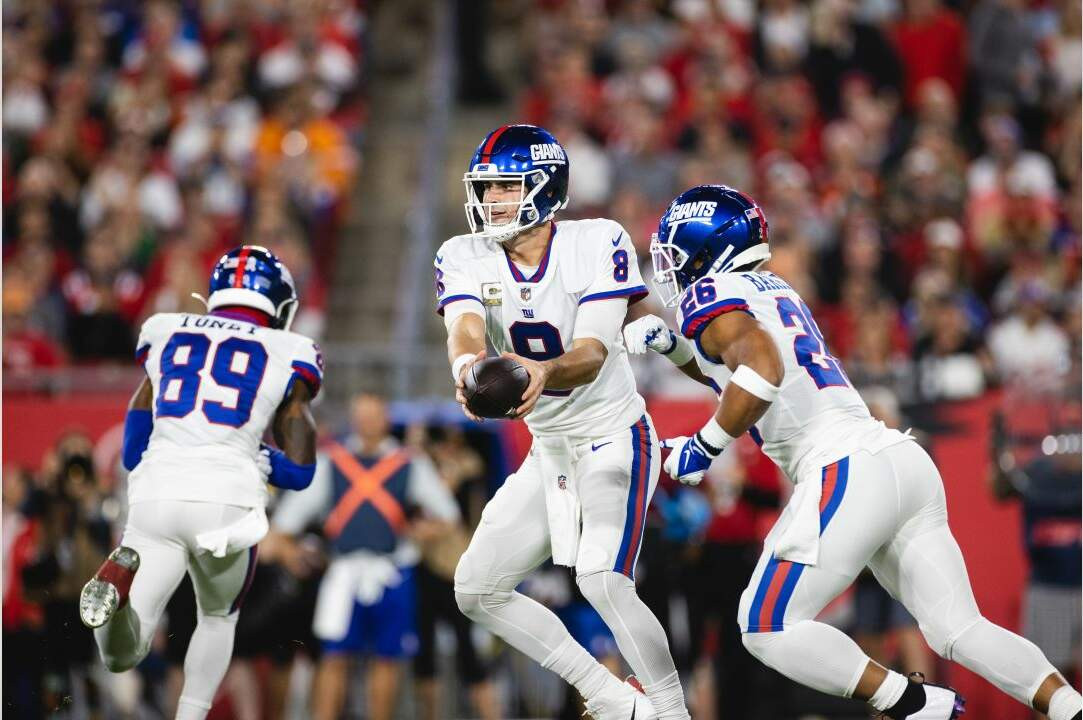
The catalyst for this renewed uniform discussion was the announcement that the Giants would be retiring their “Color Rush” uniform to make way for a new “Legacy Red” alternate. The “Color Rush” uniform, essentially a throwback to the Giants’ road uniforms of the 1980s and 1990s, is considered by many fans to be a superior road option compared to their current standard away uniform. This sentiment raises a crucial question: why do many feel the current New York Giants road uniform falls short, and what could be done to improve it?
The Current New York Giants Road Uniform: A Point of Contention
The current New York Giants road uniform features a white jersey and white pants. The jersey is accented with red Northwestern stripes on the sleeve caps and bold red block numbers. The pants mirror this design with a matching red Northwestern stripe. Completing the look are red socks. While the helmet remains the classic blue with a thin red stripe, the absence of blue from the neck down in the road uniform is a significant point of contention for many fans. How can a team nicknamed “Big Blue” have no blue incorporated into their road uniforms, aside from the helmet? This stark contrast to their home uniforms further emphasizes the visual disconnect.
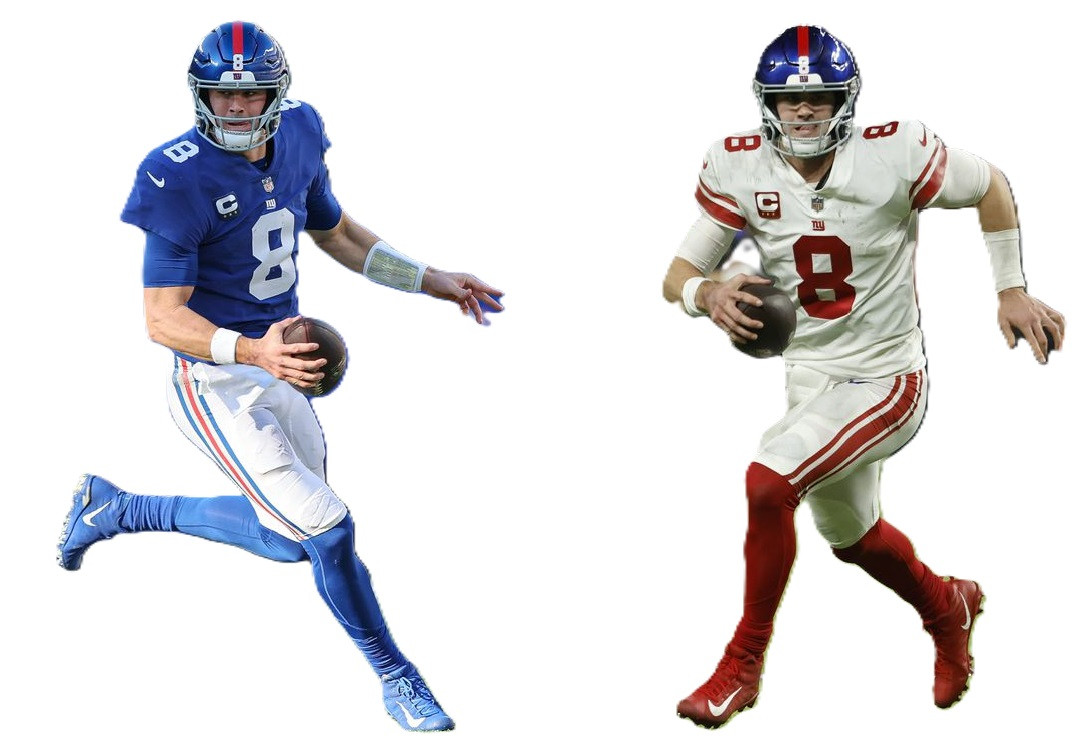
Indeed, aside from the helmet, the home and road uniforms appear to be entirely different entities. The home jersey is a solid blue, adorned with white block numbers, paired with white pants featuring a blue/gray/red/gray/blue striping pattern and blue socks. The road uniform, with its Northwestern stripes and complete lack of blue (below the helmet), presents a visually disparate identity. To understand how the Giants arrived at this design, we must journey back through the decades and trace the evolution of their uniforms.
A Historical Journey Through Giants Uniforms
From their establishment in 1925 until 1936, the New York Giants were predominantly recognized as a red team. It wasn’t until 1937 that blue entered the equation, with the introduction of their first solid blue jersey. Initially, this blue jersey was paired with both gray and tan pants. Interestingly, this 1937 blue jersey design bore a striking resemblance to the Giants’ jerseys as recently as 2018. For games against teams in blue or similar dark colors, the Giants would don red jerseys.
From 1937 through 1952, the Giants maintained this blue/gray uniform combination, switching to red jerseys when facing teams with similar dark uniforms. Minor helmet adjustments aside, this remained their standard look. The advent of black and white television broadcasting in the 1950s prompted teams to introduce white alternate jerseys to provide better on-screen contrast. In 1953, the Giants debuted their first white jersey. Northwestern stripes were added to the white jersey in 1954. While the red jersey remained in use until 1956, the white jersey effectively rendered it redundant. By 1957, the Giants adopted a more familiar aesthetic, incorporating the red/gray/blue/gray/red striping pattern to their gray pants.
Throughout the 1960s, this look remained largely consistent. A minor alteration occurred in 1961 with the addition of the classic “ny” logo to their helmets and a change to the pants’ striping pattern. This basic design persisted until 1965. Significant changes arrived in 1966 when the Giants swapped gray pants for white and introduced a blue/red/blue stripe to both the white jersey and pants. With the exception of the “ny” helmet logo, these uniforms closely mirrored the iconic 1980s and 1990s designs. Many consider the 1966-1974 period to represent the Giants’ visually finest era, a look they have approached but never fully replicated since.
The Giants’ uniform design deviated in the mid-1970s, marked by the brief introduction of the “Disco” NY logo and blue pants. Jerseys and pants underwent redesigns. Upon moving to the Meadowlands in 1976, the team introduced the “GIANTS” helmet logo. By 1979, the blue pants were phased out. The 1980 season marked the debut of the uniform set that would carry the Giants to their first two Super Bowl victories, a design they have frequently revisited in throwback iterations. This look, with minimal changes, endured until 1999.
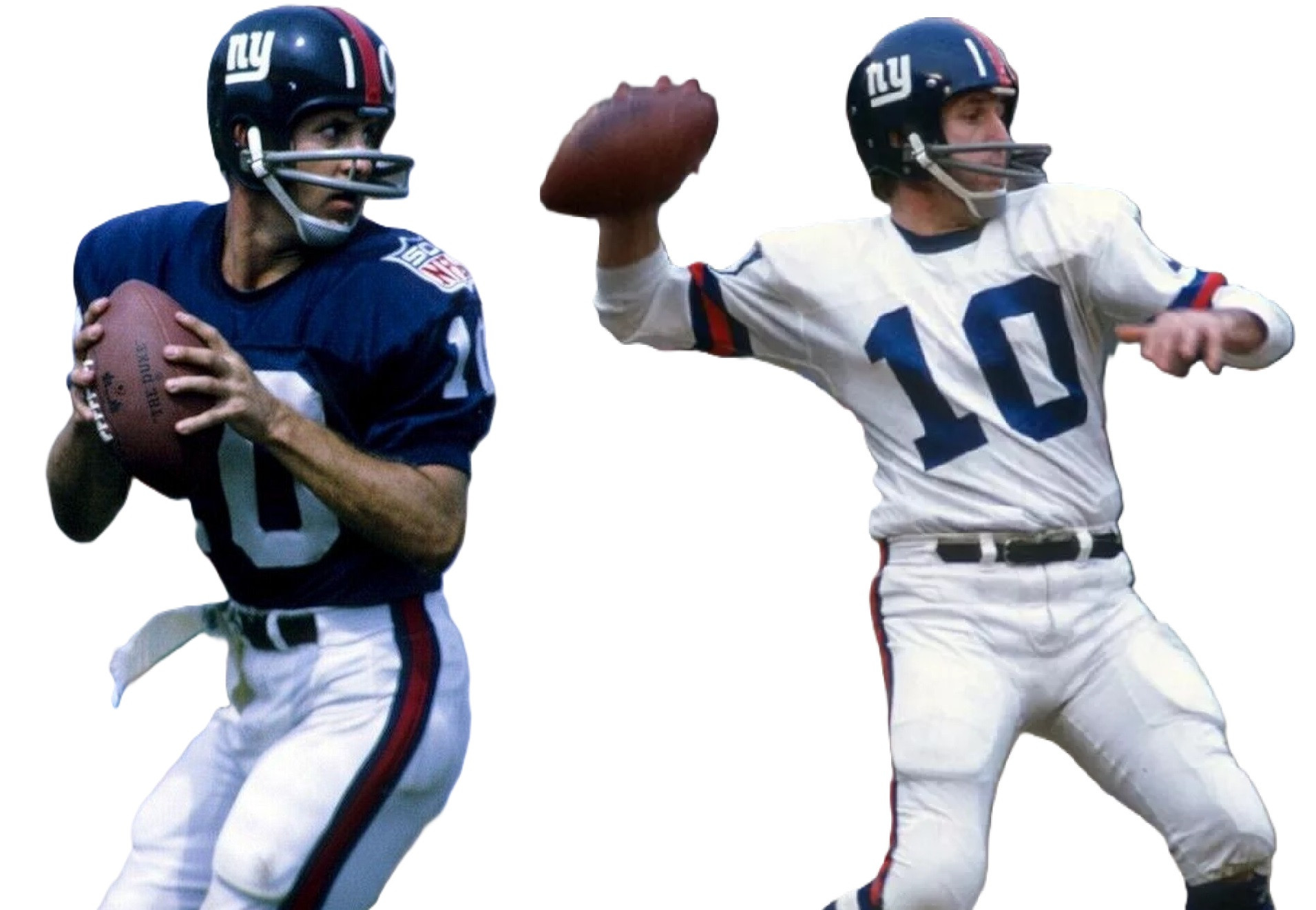
For the 2000 season, the Giants underwent a redesign, drawing inspiration from their early 1960s uniform set for their home attire. However, the new road jersey did not fully align with the red-heavy aesthetic and Northwestern striping of the past. This new road jersey featured red numbers outlined in blue, a blue collar, and no sleeve stripes. It wasn’t until 2005 that the road uniform was tweaked to reinstate Northwestern stripes and adjust the pants’ striping pattern. In 2009, the team eliminated the home gray pants, opting for gray pants with the red/gray/blue/gray/red striping pattern for both home and road games.
The following season, 2010, saw the Giants experiment with both the old (blue/red/blue) and new (red/gray/blue/gray/red) pants paired with the home jerseys. By 2012, they reverted to a single set of gray pants for both home and road uniforms. However, further changes were on the horizon. In 2013, white pants with the red/gray/blue/gray/red striping pattern began to appear for some home games. Over the subsequent seasons, the team continued to utilize both white and gray pants with the blue jerseys, typically wearing white pants for home games and gray pants for road games (with both white and blue jerseys).
Throughout these years, the white road jersey remained consistent. In 2017, the “Color Rush” uniform was introduced (now retired for the current year), while the regular white road jersey remained unchanged. Finally, in 2021, white pants were introduced for wear with the white jerseys. These pants were a departure from previous designs, featuring a red Northwestern stripe. This combination has remained their road uniform since then.
Analyzing the “No Blue” Road Uniform and Potential Solutions
The current New York Giants road uniform, therefore, has historical roots tracing back to the 1950s with its “all-red” white jersey. However, numerous periods throughout Giants history have seen their white jerseys incorporate significant amounts of blue, and at times, feature no red at all. Despite their traditional reputation (with a brief 1970s exception), the Giants’ road uniforms have exhibited considerable inconsistency. They have transitioned from no blue to predominantly blue, to a blend of red and blue, and back to no blue. Their pants have fluctuated between white and gray, with varying blue and red striping combinations, and are now back to white pants devoid of blue.
For long-time Giants fans, this inconsistency, particularly the current road uniform’s lack of blue, can be frustrating. While the solid blue home jersey with no red has remained a relative constant and is widely considered their best look, the optimal road uniform remains a subject of debate. The current road uniform is considered by many to be lacking. A return to a look similar to the “Fran Tarkenton era” is often suggested, combining the current helmet, solid blue home jersey, and white pants with a blue/red/blue striping pattern (matching the helmet). For the road, a white jersey with a blue/red/blue stripe (mirroring the helmet and pants) and solid blue numbers is proposed as a significantly improved alternative, echoing the positive reception of their 1980s/1990s/”Color Rush” uniforms.
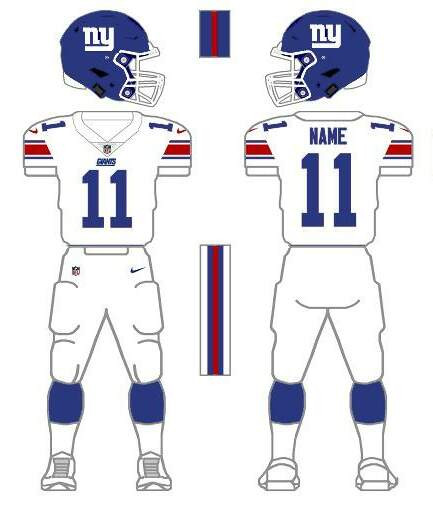
Various concept designs have emerged over the years aiming to revitalize the Giants road uniform. Many of these proposals center around reintroducing blue into the white jersey. One approach involves retaining the current road jersey but changing the numbers to blue and refining the Northwestern stripe. Others simply suggest swapping the red numbers and stripes for blue.
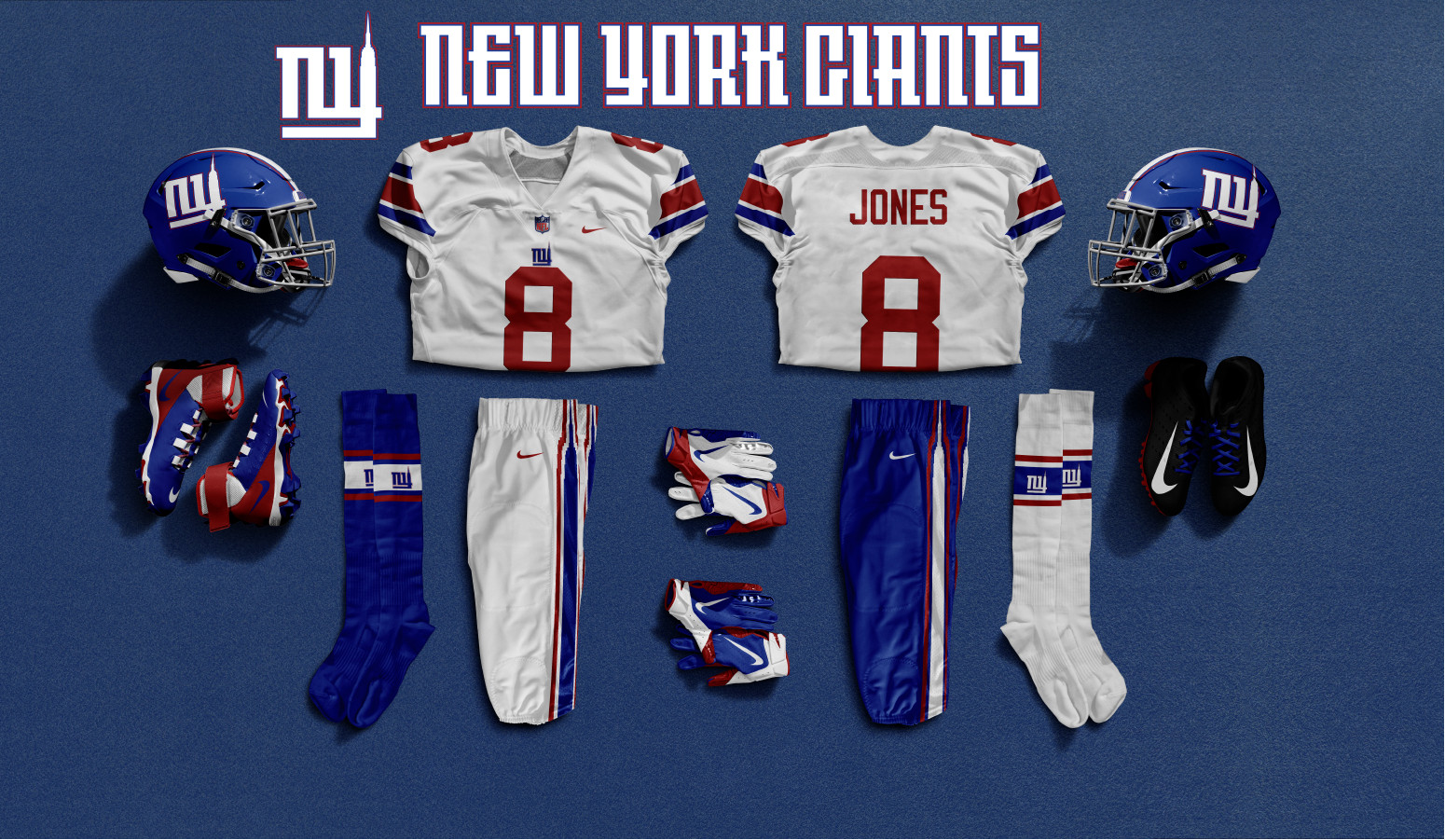
Further concepts explore variations on the 1980s/1990s/”Color Rush” aesthetic. One concept proposes a new helmet striping pattern and the addition of blue pants, utilizing a modified Northwestern stripe on the sleeves. Other concepts blend the 1980s/1990s/”Color Rush” jersey with the current helmet and pants.
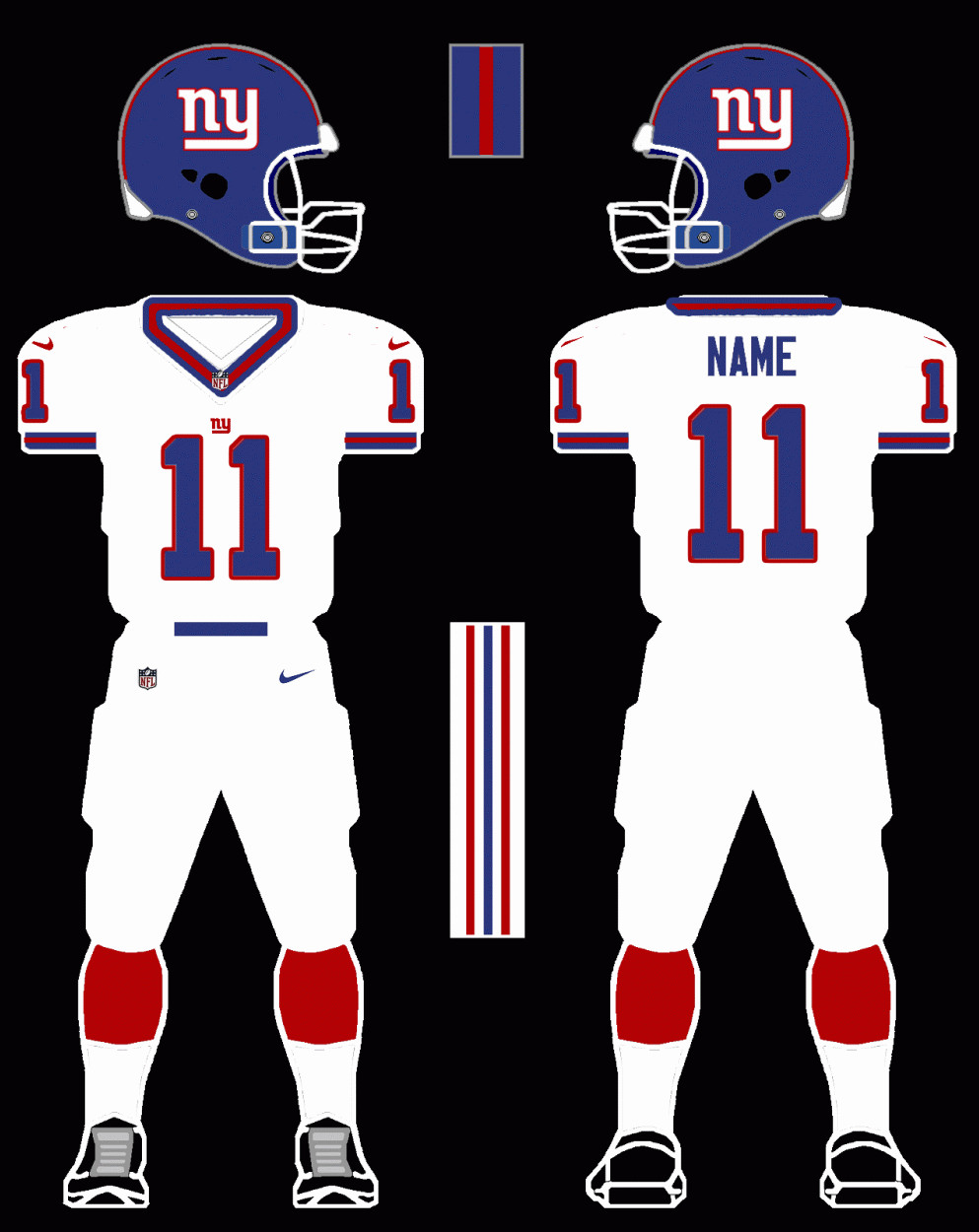
While no single concept has emerged as a definitive solution, the consensus among many fans is that the current road uniform, particularly the jersey, needs to incorporate blue. Whether this is achieved through subtle blue accents like the early 2000s blue collar and blue-outlined red numbers, or a more substantial blue presence reminiscent of the “Fran Tarkenton era”, the inclusion of blue is seen as crucial. The potential return of gray pants, paired with a revised white jersey featuring blue elements, is also a popular suggestion.
Conclusion: The Road Ahead for Giants Uniforms
The New York Giants’ football uniforms have a rich and complex history, particularly their road attire. From red-dominant beginnings to blue and red combinations, and now to a largely red and white road uniform, the Giants have presented a diverse range of looks over the decades. The current road uniform, lacking blue below the helmet, is a point of contention for many fans who yearn for a stronger visual connection to the team’s “Big Blue” identity and a more cohesive uniform set overall.
While the Giants have recently introduced a “Legacy Red” uniform, the discussion surrounding their primary road uniform persists. Exploring options that reintroduce blue into the white jersey, potentially drawing inspiration from past eras like the “Fran Tarkenton” or 1980s/1990s designs, could lead to a more universally embraced and aesthetically satisfying New York Giants road uniform for the future. The ultimate direction the Giants will take with their uniforms remains to be seen, but the passion and opinions of the fanbase regarding their visual identity are undeniable and will undoubtedly continue to shape the conversation.

